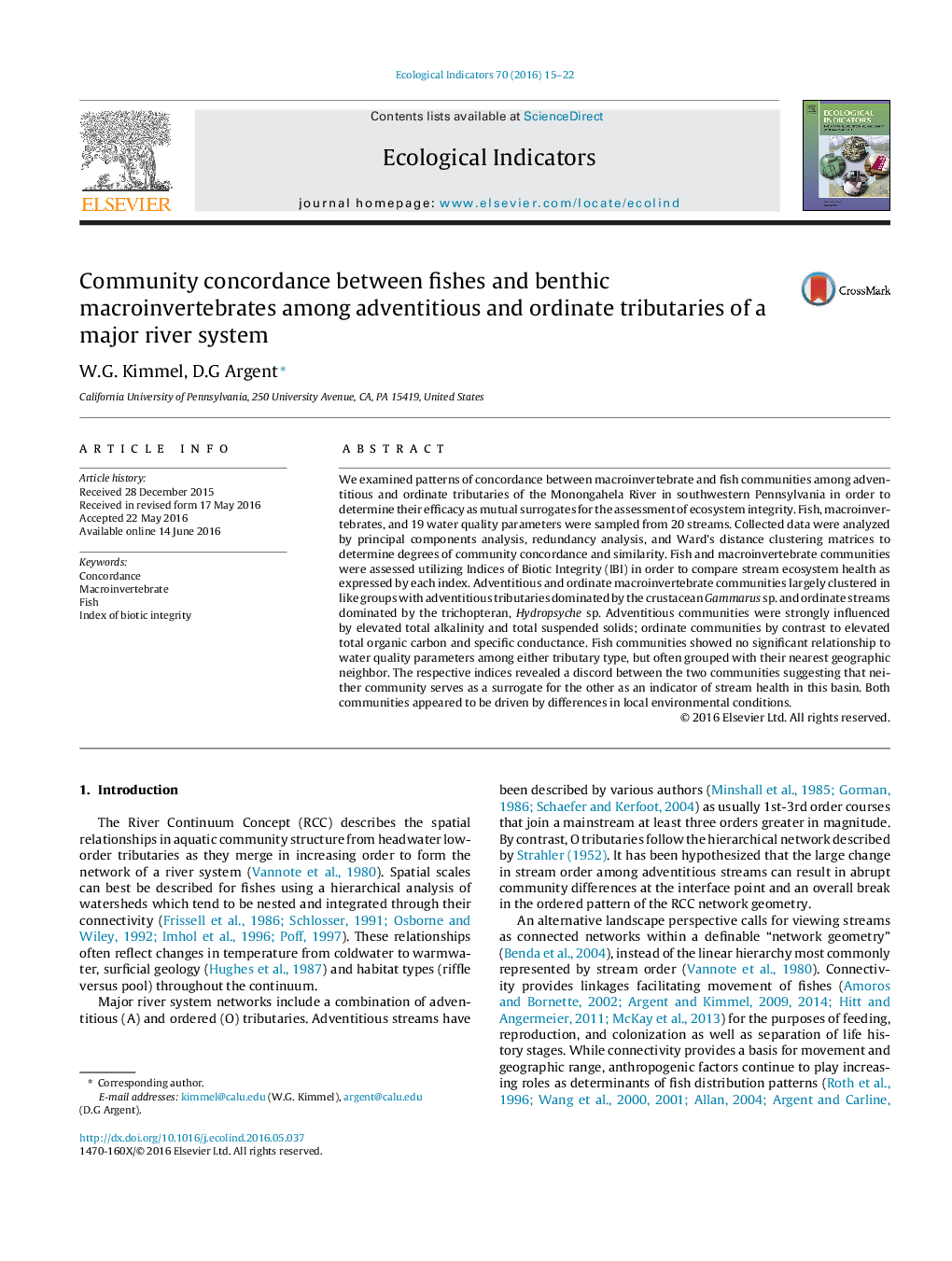| Article ID | Journal | Published Year | Pages | File Type |
|---|---|---|---|---|
| 6293042 | Ecological Indicators | 2016 | 8 Pages |
We examined patterns of concordance between macroinvertebrate and fish communities among adventitious and ordinate tributaries of the Monongahela River in southwestern Pennsylvania in order to determine their efficacy as mutual surrogates for the assessment of ecosystem integrity. Fish, macroinvertebrates, and 19 water quality parameters were sampled from 20 streams. Collected data were analyzed by principal components analysis, redundancy analysis, and Ward's distance clustering matrices to determine degrees of community concordance and similarity. Fish and macroinvertebrate communities were assessed utilizing Indices of Biotic Integrity (IBI) in order to compare stream ecosystem health as expressed by each index. Adventitious and ordinate macroinvertebrate communities largely clustered in like groups with adventitious tributaries dominated by the crustacean Gammarus sp. and ordinate streams dominated by the trichopteran, Hydropsyche sp. Adventitious communities were strongly influenced by elevated total alkalinity and total suspended solids; ordinate communities by contrast to elevated total organic carbon and specific conductance. Fish communities showed no significant relationship to water quality parameters among either tributary type, but often grouped with their nearest geographic neighbor. The respective indices revealed a discord between the two communities suggesting that neither community serves as a surrogate for the other as an indicator of stream health in this basin. Both communities appeared to be driven by differences in local environmental conditions.
